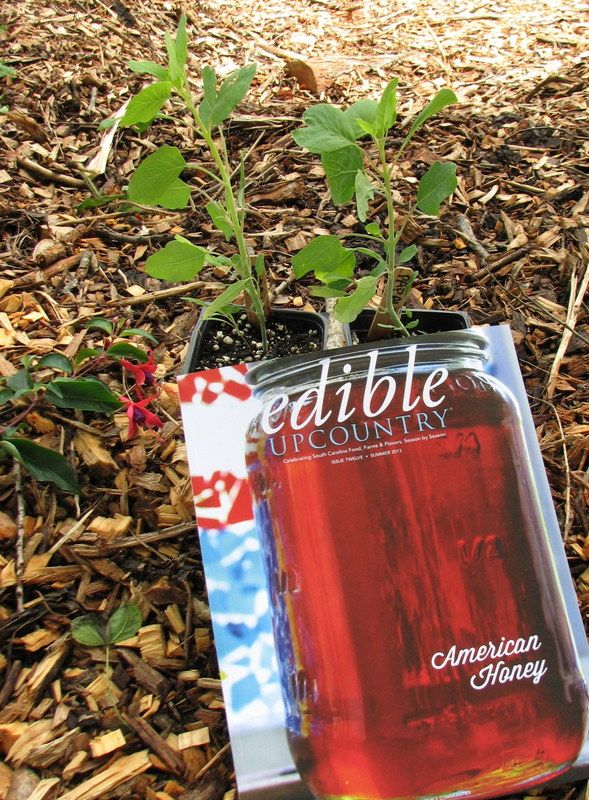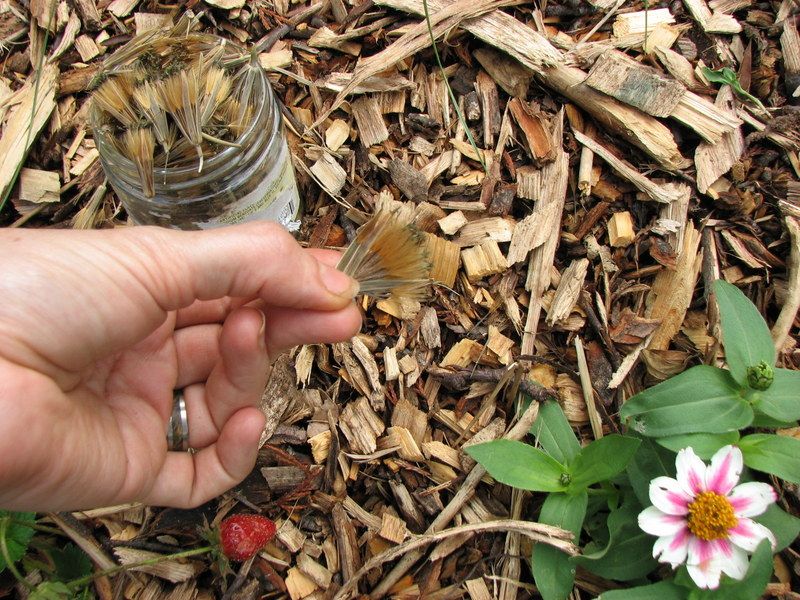How to Read Eliza’s Edible Upcountry Article & More
April heralded my first (epic) case of writer’s block. I’ve never run so close on a deadline before, but fortunately my brain clicked into place at the last minute and you can read the result in this season’s summer “honey” issue of Edible Upcountry magazine. Let me also emphatically recommend The Carolina Honeybee Company in Travelers Rest, SC for excellent products and customer service (aka confused beekeeper survival hotline).

Photo Caption: This morning I picked up these two papalo seedlings and a copy of Edible Upcountry magazine at the Swamp Rabbit Cafe & Grocery. I love that they went with the red, white, and blue cover theme instead of a more predictable amber.
If you aren’t familiar, Edible Upcountry is a high quality free publication showcasing local food that is available at many local businesses. I picked my copy up at the Swamp Rabbit Cafe & Grocery this morning along with a delicious scone and a couple papalo transplants.

Photo Caption: I have been saving papalo seeds for a while but this year they molded! It’s hard to see, but each seed is covered with a frost of white fungus. A cloud of spores puffed into the air when I reached in the jar. We aren’t sure why since they had been thoroughly dried and stored in a breathable container.
What’s papalo? I’ve written about papalo as our second favorite summer cilantro substitute (Vietnamese cilantro is our #1 favorite… which means I should probably write about it soon). Since real cilantro disappears in the heat, we like to grow other herbs for our hot weather salsas.
For years I’ve been growing papalo and saving its seeds until this season when my stash molded. I tried planting some anyway but two weeks later there’s no germination — they should have popped up almost immediately with the warm weather we’ve had lately. Papalo pouts if you plant it in the spring but thrives in warm soil.
After resigning myself to live without, I was surprised and delighted to discover a flat of papalo seedlings among the transplants Parson Produce is selling at the Swamp Rabbit Cafe & Grocery. If you get one, put it in full sun and expect it to grow to at least 4′ tall.
In other news, expect a series of exciting blog posts this week! My schedule has finally cleared up a bit and we have a ton of cool projects and activities to report.
~Eliza
3 thoughts on “How to Read Eliza’s Edible Upcountry Article & More”
Comments are closed.

PlantPostings
Twitter: plantpostings
- June 3, 2013 10:05 pm
Gosh, sorry about the mold, but good news that they had the seedlings. And congrats on the article! I’ll look forward to your upcoming posts!
PlantPostings´s last blog post ..Garden lessons learned: spring 2013
Eliza Lord
Twitter: appalachianfeet
- June 7, 2013 10:28 am
Thanks! Yeah, I was really surprised about the mold because I’ve been saving seeds from this plant and didn’t change my routine. Not sure why it happened.
Pingback: How to “Permiculturefy” an Urban Farm | Appalachian Feet